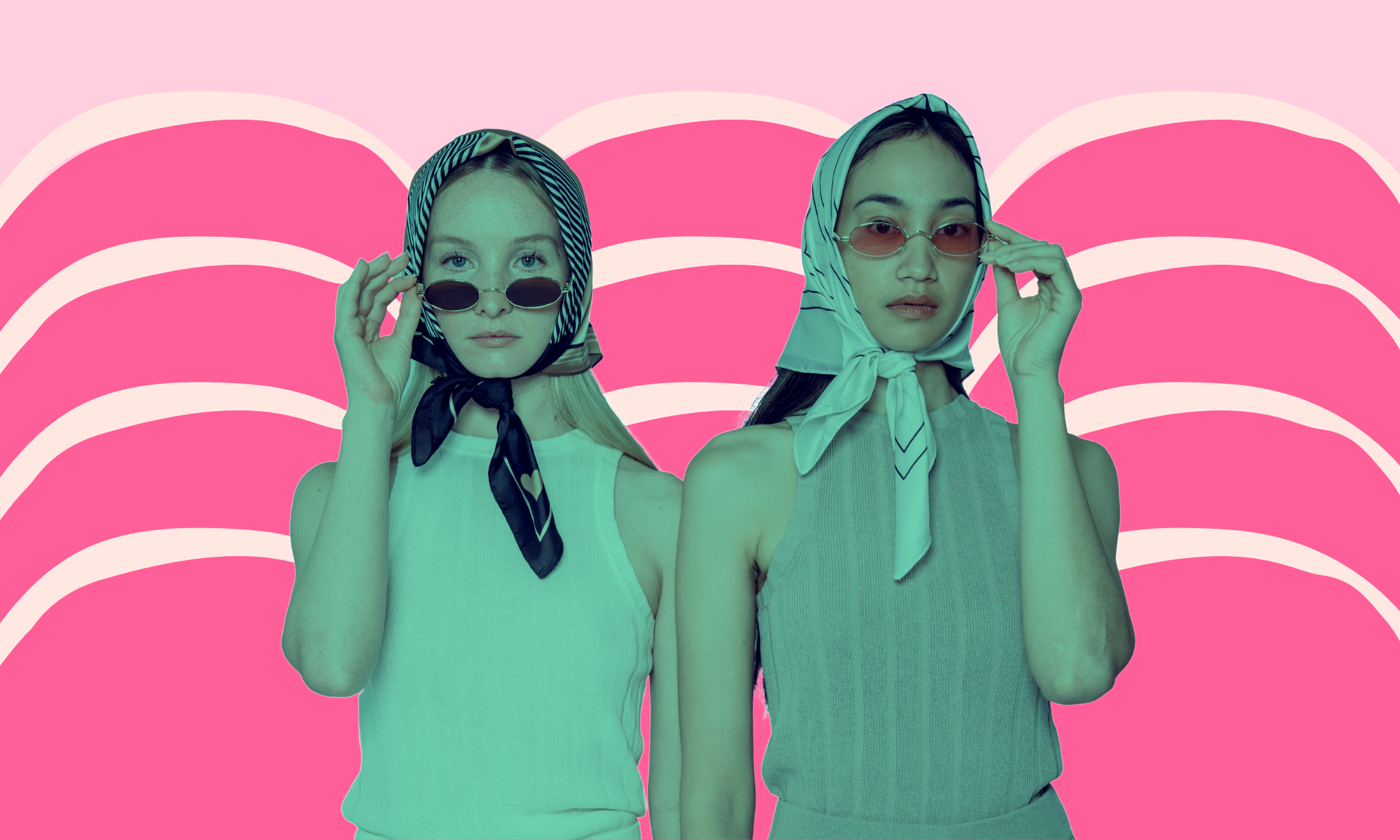
Image via Sasha Kim / Pexels
‘Modest fashion’ only works in a world where Muslim women aren’t criminalised for it
From snoods to scarves, head coverings might be in vogue, but what does that mean for the Muslim women continuously targeted for doing the exact same thing?
Adama Juldeh Munu
11 Feb 2022
I cannot imagine that I am the only Muslim woman who is exhausted by the barrage of anti-Muslim hatred that we have seen in the past few days, particularly on the issue of the hijab. From the protests following a hijab ban in schools in India’s Karnataka Udupi district and a proposed hijab ban for Germany’s public sector, Muslim women who have come of age in the post 9/11 world will tell you that the demonisation of the hijab and the niqab are just one of the many forms of Islamophobia the community has long endured – especially in Western European countries like France. In light of the country’s plans to ban the hijab from competitive sport, and the launch of the government’s French Islam Initiative, the Forum of the Islam of France, one of its most important fashion media outlets said four words that were obtuse at best and revealing at worst.
Vogue France was criticised for publishing an Instagram photo showing actress and model Julia Fox wearing a headscarf, with the caption “Yes to the headscarf.” There was no context and no explanation given for it. But the photo was part of a montage showing Fox and her boyfriend Kanye West as part of Haute Couture Fashion Week in Paris. In two photos, West wears a balaclava with only his eyes visible.
“Were these choices supposed to be some sort of avant-garde salute to Muslim headdresses amidst rising Islamophobia? Probably not”
Were these choices supposed to be some sort of avant-garde salute to Muslim headdresses amidst rising Islamophobia? Probably not. But we may never know, because Vogue France deleted the caption, without choosing to acknowledge it. However, the comments beneath the post were scathing enough. “In France a hijab is illegal, but a head scarf is chic“ says one, while another says “France loves headscarves when white women are wearing them (she looks great tho [sic] no notes on that!!).”
It comes amid a trend of more modest fashion choices that the Guardian speculatively describes as the “the great cover up”. The spectrum is pretty wide and includes everything from trench coats, oversized jumpers and midi dresses, to the burkini. “Dolce & Gabbana now sells abayas,” the article says, “Nike stocks hijabs for athletes. At almost every global fashion week, the dominant fashion aesthetic has tilted toward longer hemlines, higher necklines and more voluminous fabric.” Some people fear that this is a trend that ‘skirts’ around the issue of how Muslim women have been demonised for covering up.
This is something Rashmee Kumar argues in an article for The Intercept. She describes Gap’s back-to-school-ads in summer 2018 featuring a young girl in a hijab, and draws comparison to how, meanwhile that same year, children in Delaware were forced to leave a public swimming pool for fears that their hijabs could clog the filtration system. Kumar also notes how, when Nike released its first sport hijabs in December 2017, that same month, the Transportation Security Administration (TSA) pulled 14 Muslim women in the hijab out of a security check line at Newark airport, and searched and detained them for two hours. The article also looks at the homogenising of Muslim identity inherent in modest fashion which discounts racial diversity among Muslims (especially Black Muslims), class, and the variety of spiritual leanings within Islam, such as sufism or salafism.
Just to throw a curveball here. Modesty is not the sole preserve of Muslim women (and men). While Muslim modest fashion and Muslim models such as Halima Aden, Mariah Idrissi and Hawda Mohamed have become more visible, modest wear can be found in other religious traditions and cultures, including ironically, Europe’s past fashion. For instance, in the Orthodox Jewish world, tzniut (Hebrew) or tznius (Yiddish) governs the guidelines for modesty while Rasta women are also expected to cover their hair and dress in loose clothing. And there are spiritual and cultural connations associated with dressing modestly for Black Muslim women. Studies show that there’s a growing appetite among non-Muslims or those without religious affiliation for modest wear, be it in Muslim majority countries like Malaysia or Saudia Arabia, or within Western countries.
That is why the core contention should not be that Julia Fox wore a headscarf in the photo, it is the meaning that Vogue France gave it, in light of France’s political atmosphere. In another world, that caption would not have caused much ruckus, were it true. But if Gucci knitwear showing ‘blackface’, Prada’s Little Black Sambo bag and Dolce & Gabbana’s anti-Asian comments, are anything to go by, fashion is rarely ever apolitical. And that is where Vogue France and others have gotten it so wrong.
“During the colonial period, the wives of French army officers presided over the public unveiling of Algerian women”
The photo and the caption combined is a unique example of co-option within the context of France, as issues of appropriation are commonly discussed within the context of race and cultural heritage in countries like the United Kingdom and the United States. Vogue France’s faux pas should be understood within France’s historical context, as it relates to the descendants of its former Muslim colonies. In Unveil Them to Save Them, Jyhene Kebsi explains that during the colonial period, the wives of French army officers presided over the public unveiling of Algerian women. Muslim Maghrebi women were oftentimes paid or forced to remove their hijabs and to adopt the slogan, “Let’s be like the French woman.” Thereby, French Muslim women have for a long time borne the full brunt of France’s desire to stamp out signs of cultural and religious distinction from the public sphere.
It has been long understood and believed that the hijab was not something worth appropriating or co-opting for its alleged inferiority and non-Frenchness. The most extreme response could only ever be to ban it or ‘other’ it…until now, where it appears that it is appropriate and ‘French’ for a non-Muslim white woman to wear within ‘high culture’. This is perhaps made easier because we are living in a time where representation politics is ‘vogue’. But it is a form of cognitive dissonance for Vogue France to utilise this to undercut Muslim women or other women of faith. A similar analogy would be the fact that European nuns are rarely demonised for wearing their habits, which mirror the Muslim hijab. Until the situation changes on the ground for French Muslim women (there is an impending presidential election in April this year, so probably not), the most appropriate caption for the Julia Fox photo is Non au foulard (No to the headscarf).
“Perhaps we are expecting too much from an industry that is as obtuse in properly acknowledging its role in the promotion of Eurocentric beauty standards”
The example of the shaving of enslaved African women’s hair was a clear precedent that ownership of their identities was inextricably linked to material benefits or labour production. It is for this reason that Céline Semaan’s suggestion that colonialism is not a thing of the past, but an economic reality, rings particularly true in the case of the Vogue France post and other such examples. There are real economic and financial impediments for Muslim women and girls who wish to follow their religious prescriptions. It is the inability to go to school and university, compete in sports, facing discrimination at work or being attacked on the streets wherever they may be.
Perhaps we are expecting too much from an industry that is as obtuse in properly acknowledging its role in the promotion of Eurocentric beauty standards, the use of sweatshops and the contribution it has made in harming the environment. We can only, therefore, look to global consumers, be they Muslim or not, to continue to pile the pressure on, as they did on Instagram, with their voices, and their pockets to ensure that parts of the fashion industry do not get away with shoving the issue of anti-Muslim hatred under the carpet, to call the floor clean. All the while seeing fashion headscarves in places where the right for Muslim women to wear their hijabs are taken away. Of course, non-Muslim women wearing modest apparel is not criminal. The aim is to ensure Muslim women doing the same are not considered to be.





